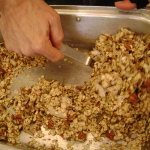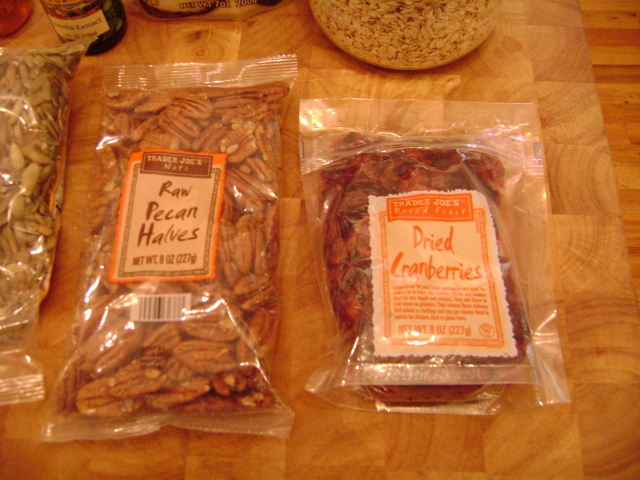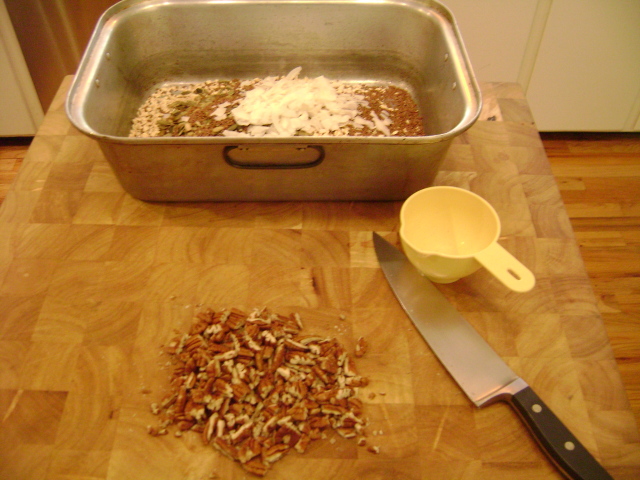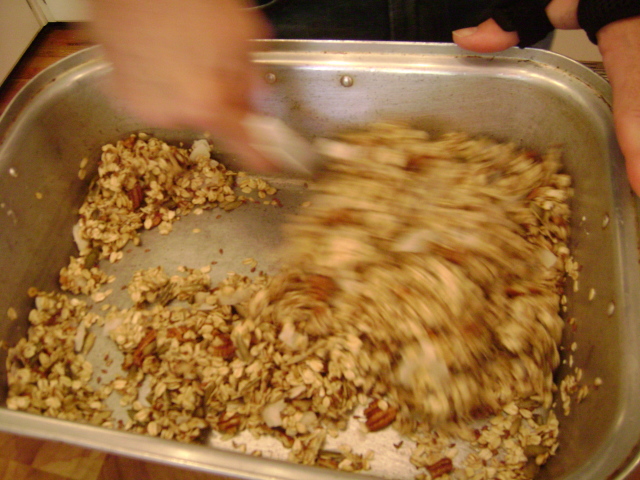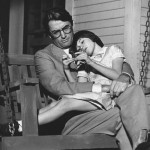The Wheel Turns

At the end of the Civil War, the United States assumed ownership of Robert E. Lee’s family plantation, high on a hill in Arlington, just across the river from the Nation’s – the unified nation’s – capitol. The family home remains, but the grounds of that plantation, a place where hundreds of slaves worked and died, became the final resting place for more than 15,000 dead Union soldiers.<fn>This ranks among the finest and most appropriate nose-rubbings in American history, and dog knows we have a history nose-rubbings both noble and ig.</fn> One hundred fifty years later, the body count approaches half a million.<fn>It is a bitter pill that, as the cemetery expanded to fit all the fallen, a large community or freedmen was evicted to make room for more corpses.</fn>
The first memory I have of Arlington is a Spring Break trip there with my Dad to visit the memorial marker for his younger brother, a Top Gun pilot who died in a training run in 1964. This visit was c. 1973, near the end of the Vietnam War. There was something about the way the geometry of all the grave sites shifted as you moved down the road that made it look infinite. And it occurred to my callow self, all of 14 years old, that every white dot was a dead soldier. A guy just like my dead uncle. And somehow the horror that I had never registered through years of watching Vietnam carnage on teevee landed with a careening thud. And I remember this horrific, engulfing sadness, mingled with a concern that I was going to start crying, sobbing – in front of my dad! – and how could I possibly save myself from such embarrassment, so my horror and fear mixed into this massive spaghetti ball of empathy for the victims and fear of shame for myself, which I managed to escape by stuffing my feelings down the way well raised males of a certain age know all too well.
What I didn’t know is that my dad took my picture while this internal riot was raging. It has hung in his (every) home ever since. Did he know?
Every time I’ve visited since then, the massive horror of the place envelops me. I am angry. I see the grand monuments of the generals and admirals, the ostentatious stones and crosses planted for the men who sent the rest of that half-million mostly forgotten horde to mostly senseless slaughter. I am no fan of war, no admirer of military “might”. Much of what the National Cemetery represents is senseless waste, cock-strutting ego. It is evidence of a madness that is evidently irresistible to many who gain power.
But somehow, there is always an overwhelming sense of awe and serenity, a presence of commitment and memoriam that I’ve experienced only a handful of times.
Nothing rings that bell more than the Tomb of the Unknowns.
Today found me – 43 years after my father brought me to Arlington for the first time – bringing my own son to Arlington. It’s our first day of a Spring Break romp through American History, a subject that we both enjoy. As we walked into the grounds, I felt the tingle. This place just gets to me. We wandered past the Kennedy flame and on up the hill to the historic Lee home. Every few minutes, a thundering boom of commemorative cannon fire or the crack of rifle shots broke the silence. Apparently, there are upwards of two dozen interments every week day. The gravedigger’s job is never finished.
We had time to stroll. The markers were often unintentionally funny. Many higher-ranking officers had their wives buried next to them, their stone reading simply “wife”. This “wife” had a name, that one didn’t. Best monument of all: a Navy Admiral whose stone specified “And His Second Wife”, a last gasp middle-finger extended from the beyond toward wife #1, who must have really been a piece of work to deserve such an enduring “ah fanabla”.
Clouds of gunpowder smoke hung over the hills. And despite the fact that there was a considerable crowd of all-American event-attenders, there was none of the antic quality tourist crowds bring to almost every other “point of interest”. Even the kids we’d watched using the Metro hang straps like monkeys somehow knew to dial it down.
As we approached the Tomb, the silence grew deeper. It was crowded. One small child was crying, but his Dad – a Marine by the looks of his t-shirt and hat – lifted him gently and carried him out. A few minutes later, both were back. Quiet.
The Honor Guard upheld the ritual that has been played out thousands of times. Twenty-one steps to the south. Heel click. Twenty-one second pause. Turn to the east. Click. Twenty-one second pause. Turn north. Click. Twenty-one second pause. Shift rifle from the east shoulder to the west shoulder. Twenty-one steps north. Click. Turn to the east. Repeat.
There is an honor guard on duty 365/24/7. Whatever the weather. Last time I was there, it was New Year’s day c. 1992 or 3. It was very cold, like skin cracking cold. Because my Dad has a family pass, we were able to drive directly to the Tomb. We were the only people there aside from the guard. It was grey, damp, windy. We lasted about 20 minutes, just long enough to watch the Changing of the Guard. It was a solemn, precise ritual. There was no audience for this aside from three of us. It didn’t matter. They do this in the rain, the snow, in the dead of night. Twenty-one steps, twenty-one seconds. Over and over.
Ritual. Commitment. Memoriam.
So as the Changing ritual began today, we – like everyone who witnesses it – we rose to our feet. We held our hands over our hearts whenever active military would offer a full salute. The Changing was immutable, constant, reliable. A few cannon shot echoed from another ceremony.
And then, through no good planning on our part, we found ourselves witnessing an expanded ceremony, this one a wreath-laying ritual with an extra guard and musician. Four high school students “helped” the guard place a new wreath in front of the tomb. Another guard laid the previous wreath at the base of the Tomb.
All this was happening under the stern command of Master Sergeant Calderon, a truly formidable presence with a voice that demanded attention. But where we stood, we heard the other side: a gentle man, a gentleman, who softly explained to the teens exactly what to do and when to do it. The modulation from fierce to tender was precise and – really, the only word I can call up – genuine.
I was feeling misty-eyed, taken by all the sadness and beauty of 150 years worth of dead children – because truly, most of the bodies here never saw two dozen winters. A bugler presented. A robin – the first of the spring? – flew from left to right across the Tomb site. And the first notes of Taps, a crystalline tone borne on angel’s breath, took me. Flow my tears.
In the distance, a formation of fighter jets were coming up the river. I thought it a nice coincidence, here they come, nice coincidence, hey they’re flying right over us and there goes the third jet, peeling away from the formation up into the sky until the clouds swallowed it and it was gone, the traditional tribute to the missing man. I don’t think any of us were even breathing at this point. And then, the extra players marched away, leaving the lone guard with his incessant count of twenty-one, twenty-one.
It turned out the flyover was for another ceremony on the grounds. Life and death go on. Some of the dead are sent away with cannon shot. Some get rifles hoisted and fired. And some, no doubt grandees of military renown, still have the juice to garner a quick flyover of four billion dollar airplanes.
(Ed Note: Pal of i2b DD points out that the flyover was more likely for a deceased pilot, perhaps even a Top Gun like mon oncle, and not (his words) “some brass monkey”. Duly noted.)
As we walked away from the Tomb, we saw a horse-drawn hearse roll by. We followed it for a bit, then realized it had already discharged its coffin load, so we wandered back towards the exit, across the Memorial Bridge that leads to the Lincoln Memorial, a bridge that aspirationally exemplifies the rapprochement of Union and Confederacy that, somehow, remains as salient a divide today as it was that day at Appomattox. Son stopped at one point and wondered if the President might sometimes visit this place after closing, just to get a reminder of the awesome power he holds. All these lives. The weight of responsibility must be – one can only hope – truly terrifying.
We crossed the river and wandered to the front of the Lincoln, one of my favorite places, with the idea that we would read the Gettysburg Address and add some resonance to the day’s experience. But the steps were mobbed with event-attenders in full flight, and Son refused to climb the steps, refused to even look up at the statue of Abe, preferring to wait for a chance to see it when the proper reverence was at play. Smart boy. We’ll go back after dark one night.

